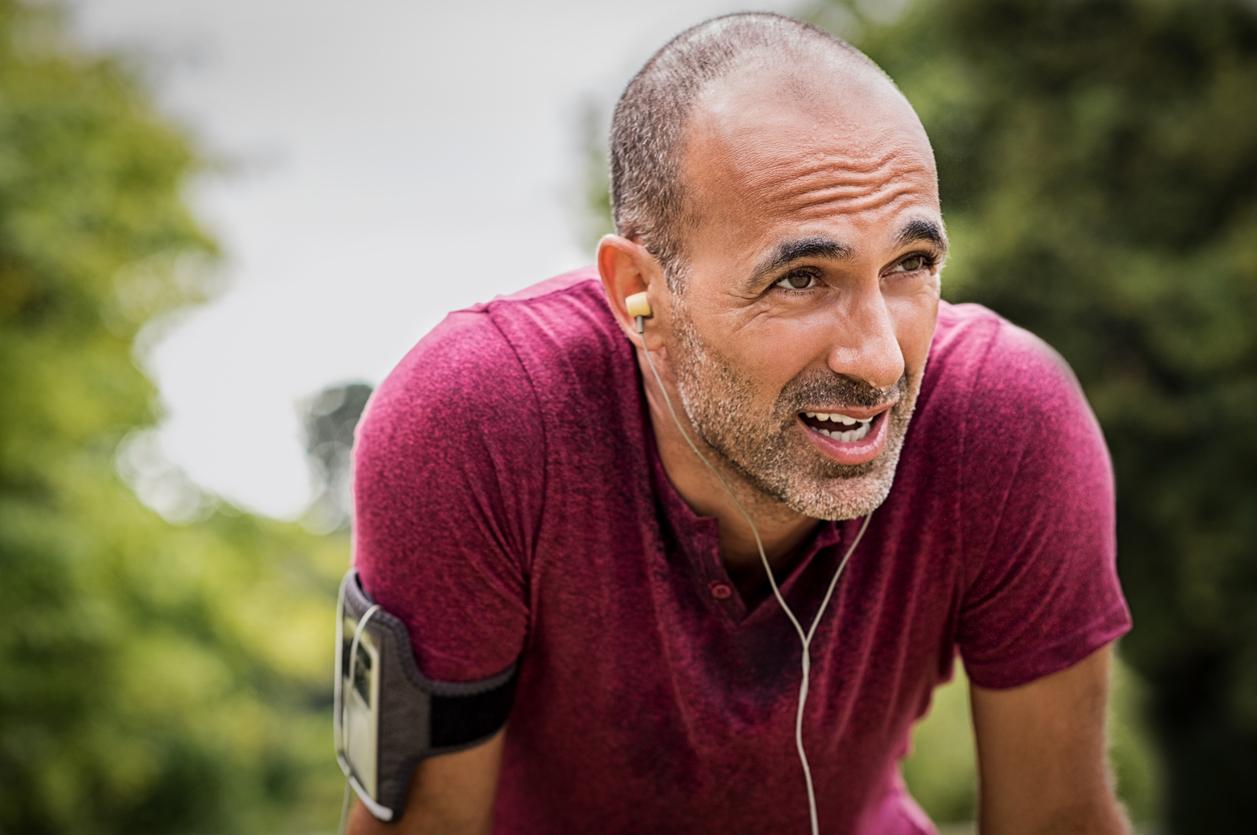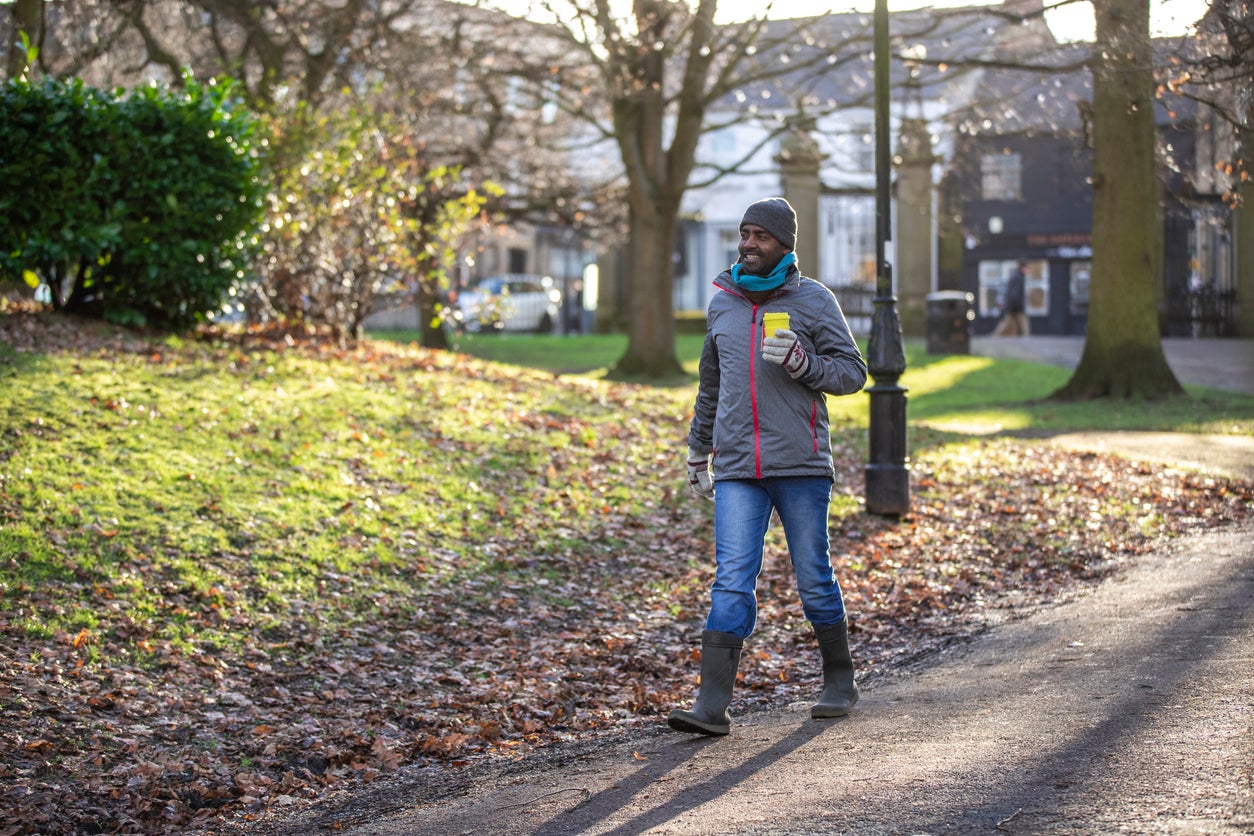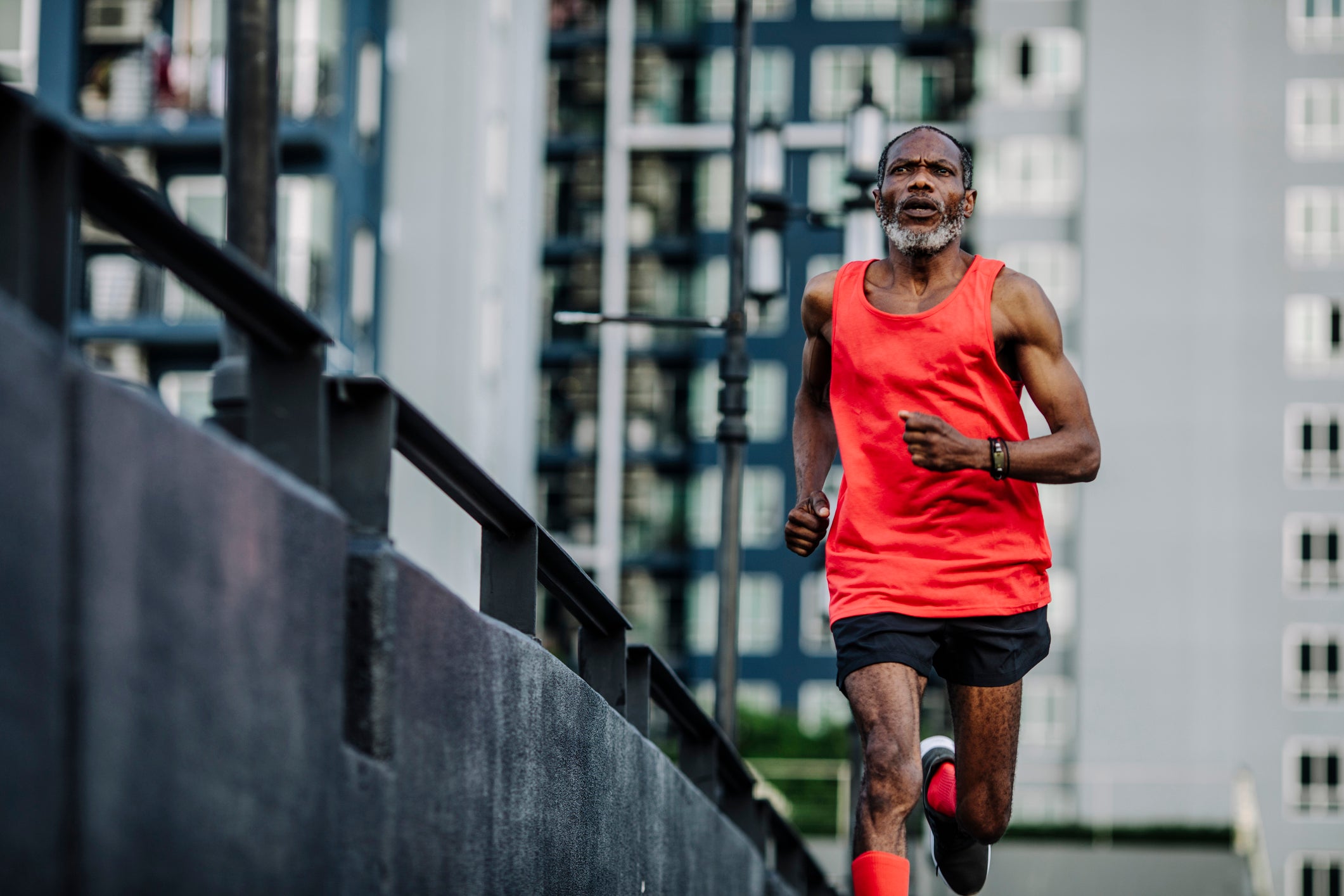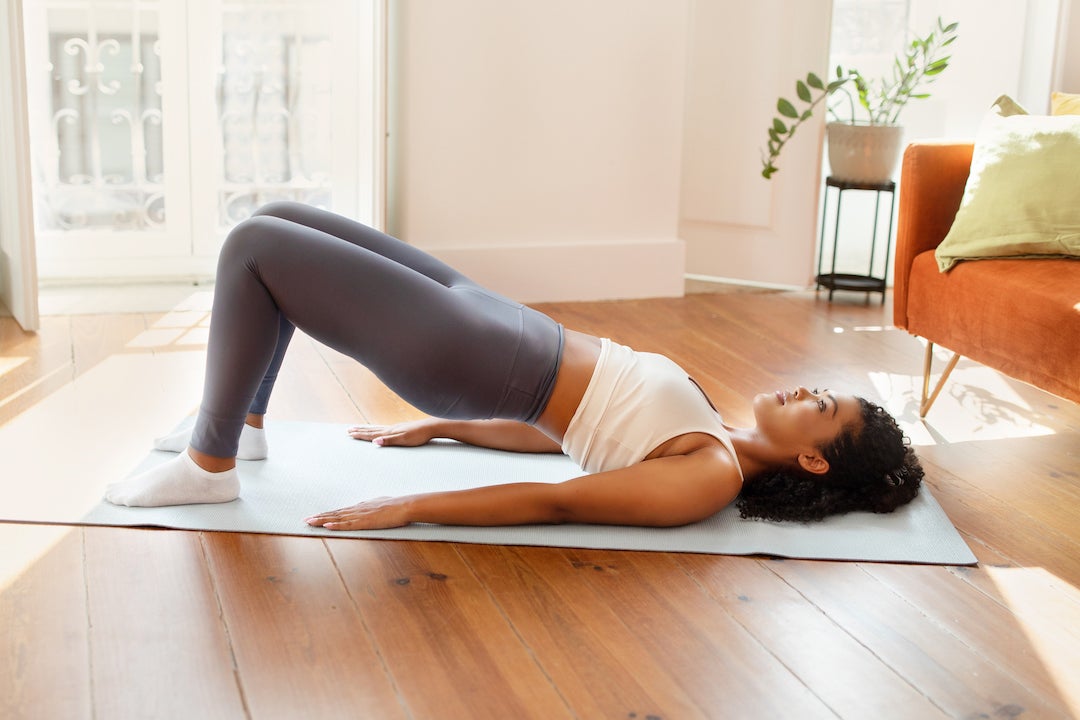As a fitness writer, I understand time is precious, and squeezing any exercise into a whirlwind week is to be applauded. But if you are outrageously busy, the chances are that you want maximum bang for your buck from your workouts, and many are missing the mark on intensity which means leaving potential health perks on the table.
Intensity is a relative term – what is easy for one person may be hard for another. The important thing is finding a level that works for you. It’s not all about working harder either; rather, you need to identify the appropriate intensity in your workouts to deliver the desired benefits, whether that’s improved endurance, better strength, more muscle, weight loss or otherwise.
Below, I speak to two experts on the topic to help you find the Goldilocks premium workout intensity for your chosen health and fitness goals.
Why is exercise intensity important?
Life can be viewed as a constant conversation with our bodies. Everything we do sends our body a message, and our body usually tries to make life a little easier by adapting accordingly.
Case in point: if you lift progressively heavier weights over the course of a few weeks, you are likely to become stronger, build some muscle and improve your bone density. If you run progressively faster or further for a few weeks, your heart and lungs will become more efficient to help energise your exercise efforts.
But to trigger the benefits we want from exercise, we need to send the body a strong enough message – this is where intensity comes in.
If the intensity is too low, the message is weaker and the body sees no need to change – for example, lifting weights in the gym that feel incredibly light, or going for a slow walk as a marathon runner. When the task feels easy, why adapt?
If the intensity is too high, the message is too strong and your body will not be able to recover from the stimulus – for example, going from not running at all to attempting a marathon in the course of a week, or trying to bench press 200kg on your first day in the gym. As a result, the body will not be able to make any positive adaptations from the activity, and you are likely to pick up an injury.
This is why finding the right intensity for your workouts is so important.

open image in gallery
Finding the right intensity for your workouts is crucial for achieving the benefits you’re after (Getty Images/iStockphoto)
How to find the right intensity for your workouts
There is no blanket prescription for workout intensity – it will vary depending on individual factors such as your fitness level and desired outcomes from each session.
The guidance below relates to the NHS physical activity guidelines for adults aged 19-64, who are advised to:
Do strengthening activities that work all major muscle groups at least two days a week. Do at least 150 minutes of moderate-intensity activity a week or 75 minutes of vigorous-intensity activity a week. Spread exercise evenly over four to five days a week, or do it every day. Reduce time spent sitting or lying down and break up long periods of not moving with some activity.
Read more: Five stretches you should be doing every day according to a flexibility expert

open image in gallery
Low-intensity activities such as walking offer many health perks, and represent a good entry point to exercise for sedentary populations (Getty/iStock)
Low-intensity physical activity
“Introducing any movement is overwhelmingly positive for sedentary individuals,” says Dr Rhys Morris, a senior lecturer in sport science at Nottingham Trent University. “Even light activity helps improve blood circulation and metabolic health, reduce stiffness and musculoskeletal discomfort, and enhance mood, energy levels and cognitive function.
“Some movement is better than none, and early improvements in health occur rapidly once sedentary people start moving more, even if the intensity is very low.”
Trends such as “zone zero” exercise and “cosy cardio” can be filed under this low-intensity banner. The purpose is to get you moving, but these activities are unlikely to have you sweating or breathing hard.
“Low-intensity, steady-state activities like walking or gentle cycling offer foundational health benefits such as better insulin sensitivity and blood sugar control, enhanced fat oxidation, and they can help you maintain a healthy body weight,” Dr Morris continues. “For many sedentary people, they are a safe, accessible and powerful starting point.”
However, once you have laid these fitness foundations, more intensity may be needed to see continued results in areas such as cardiorespiratory fitness and strength.
“The SAID principle stands for specific adaptations to imposed demands,” Dr Morris says. “It means your body adapts specifically to the type and level of stress placed upon it. If you walk slowly, your body adapts to being good at walking slowly, not at sprinting or lifting weights.”

open image in gallery
Lane swimming is an example of a low-impact, moderate-intensity activity. This can offer bonus health perks beyond those triggered by low-intensity activities (Getty Images)
Moderate-intensity exercise
Moderate-intensity exercise is the next step up. This is any activity that raises your heart rate and has you breathing harder, but you should still be composed enough to hold a conversation. Depending on individual factors, examples could include brisk walking, slow running or swimming. Moderate-intensity exercise has several advantages over low-intensity activity.
“While low-intensity movement is valuable, it falls short in several areas,” says Dr Morris. “Intensity drives adaptation. The body only changes when the stimulus exceeds what it’s accustomed to. This is the foundation of exercise physiology.”
As such, moderate-intensity exercise can build upon the benefits offered by low-intensity activity, while offering bonus perks in areas such as heart health.
Moderate-intensity activity can also be enough for many people to manage their weight, Dr Morris adds, especially if you increase your levels of NEAT (non-exercise activity thermogenesis, or energy expended during activities away from formal exercise) with activities such as walking.
Read more: The science-backed exercise method that can help fight the effects of ageing

open image in gallery
Vigorous-intensity exercise is the most efficient way to trigger positive physiological adaptations in the body (Getty/iStock)
Vigorous-intensity exercise
If you are after the most efficient way to improve fitness factors such as your VO2 max – the maximum amount of oxygen your body can take in and use during exercise – and strength, vigorous-intensity activity is the way to go. It is usually identifiable by a sweaty brow, fast-paced breathing and an inability to say more than a few words without taking a breath.
In a recent interview with the leading physical activity researcher, Professor Emmanuel Stamatakis of the University of Sydney, he described vigorous-intensity activity to me as the physiological language the body best understands.
“For the body to make adaptations to improve, let’s say, the way the heart functions, how the body absorbs oxygen or your metabolism, it needs to be pushed a little,” he explains. “That’s where vigorous-intensity activity comes in. The adaptations are basically the body’s preparation for the next time the same physical challenge is presented.”
Low- and moderate-intensity activities can fall short of providing the stimulus needed to trigger adaptations in several areas, particularly in those who already have a solid level of foundational fitness.
Dr Morris says the first area where they fail to deliver is “significant cardiovascular fitness gains”. This is bad news if you are looking to improve your performance for a sporting event such as a run or triathlon.
“Low-intensity activity won’t raise VO2 max or heart efficiency much,” he explains. “It doesn’t challenge the body enough to create strong adaptive responses. It also takes a long time to burn meaningful calories or produce adaptations. In short, low-intensity movement maintains and protects health, but it doesn’t develop fitness substantially.”
If you want to improve cardiovascular health, Dr Morris prescribes a moderate-vigorous exercise intensity where you are working at 60-80 per cent of your maximum heart rate for a prolonged period.
“This level strengthens the heart and improves oxygen delivery,” he says.
For most people, activities such as brisk walking, jogging, cycling or swimming are effective ways to achieve this. Not every workout you do has to be at this intensity – walking can still make up most of your weekly movement – but completing a session like this every few days is likely to push the fitness needle in a positive direction.
Read more: Four science-backed ways to make your daily walk even better for your health

open image in gallery
Strength training in any form is an integral part of a well-rounded exercise routine, improving strength, bone density and mobility (Getty/iStock)
Strength training
Most of the advice above relates to aerobic exercise – cyclical activities that raise the heart rate. Strength training doesn’t fall under this umbrella, but it is still relevant for your overall health and fitness – proven by its inclusion in the NHS physical activity guidelines.
“Low-intensity activities like slow walking don’t provide enough mechanical load to stimulate muscle growth or improve bone density,” Dr Morris explains.
Strength training doesn’t just improve the strength and size of your muscles – it also bolsters other tissues such as your bones, tendons and ligaments, building healthier joints and a more mobile body that is resilient against injury.
“To gain strength, you must lift progressively heavier loads,” Dr Morris explains.
Like intensity, the phrase “heavy” is relative in this case. If you are new to strength training, lighter weights will provide the same stimulus for you as heavier ones do for a seasoned gym-goer.
The key is to lift a weight for several repetitions that feels challenging for you. A good rule of thumb is to perform a strength-building exercise until your movements involuntarily slow down through muscle fatigue, but stop short of the point where tiredness forces you to compromise on technique.
Doing this with an exercise that recruits each major muscle group – the legs, back, chest, shoulders, arms and core – once or twice a week as a beginner will provide impressive results. You can find a sample full-body workout below.
The perils of training too hard
The point of this article is not to push you to work harder while exercising, but rather to help you find an appropriate intensity for your workouts. This is because, just as exercising at a lower intensity can see you skip some benefits of exercise, training too hard can also put a damper on your results.
The body can only positively adapt to exercise that it can recover from. You can boost your recovery with an ample, nutritious diet and a string of decent nights’ sleep, but if you repeatedly push your body too hard, it will still struggle to make beneficial changes.
This is something trainer Tom Lowe, founder of LowFlo gym in Golders Green, London, discovered while working with clients.
“Any type of training is positive in my eyes,” he says. “But I feel like our industry has pulled the wool over people’s eyes, telling them they can do intense classes five or seven days a week. You get a lot of people who feel like if they don’t sweat a lot, they’re not working out.”
These people are often drawn in by the “fun energy, music and sexy lighting” of some high-intensity bootcamp classes, and these environments can have their place in your fitness routine, Lowe says. Just not every day.
“You can train like that to start with, but in a week or two, you are going to be exhausted and you are going to get injured – you’re missing the recovery aspect,” he says.
For this reason, he started structuring his classes so they undulate in intensity across the week. Gym members train for 45 minutes, alternating between sessions that focus on strength, conditioning, pilates, mobility and even ballet-inspired barre workouts. The aim is to build a body that is fit, robust and mobile, while still leaving people with the energy they need to live a full life away from the gym.
“We found it tricky during the first couple of months because people were saying, ‘This is easy’,” Lowe explains. “But we built it up, and then people started to see real changes, like losing weight or being able to touch their toes for the first time in years. You could physically and mentally see the differences in people. I was trying to say to people, ‘It will take months because we’re not slamming it all the time, but you will see real sustainable change’.
“We now get people coming four or five times a week. What’s beautiful is we have classes where there is a 25-year-old Hyrox athlete training next to a 70-year-old. They are in the same class, doing the same movements, they just work at different levels.”

open image in gallery
An effective exercise routine should be realistic, sustainable and appropriate for your current situation (Getty/iStock)
Things to include in a well-rounded weekly exercise routine
The body reacts to your consistent actions. As such, if you want to change your health and fitness, you need to change your behaviour. To start, identify the changes you want to see, then identify the behaviours that will trigger them and commit to these behaviours regularly.
“To create positive change, the body must be pushed beyond its current capacity, within safe limits,” says Dr Morris. “A minimalist exercise routine for a healthy adult should include something to improve cardiovascular health, strength, mobility and mental wellbeing.
“To improve cardiovascular endurance, you must challenge the cardiovascular system beyond its usual comfort zone. To gain strength, you must lift progressively heavier loads.”
Higher volumes of low-intensity incident activity like walking can count towards fat-loss goals, based on the simple calories-in-calories-out heuristic – if you expend more calories than you consume, you will lose weight, and vice versa. However, managing your diet is generally recognised as a more effective way to achieve this.
“Higher-intensity exercise is required to stimulate muscle, cardiovascular and performance adaptations, but perceptively it can be daunting for the average person,” Dr Morris continues.
“For a beginner, it’s important to recognise that any movement helps break the sedentary cycle. Low-intensity activity can build consistent activity behaviours, which people can build on until they reach a balanced weekly routine combining both low-intensity movement and higher intensity exercise – that is optimal for health and longevity.”

